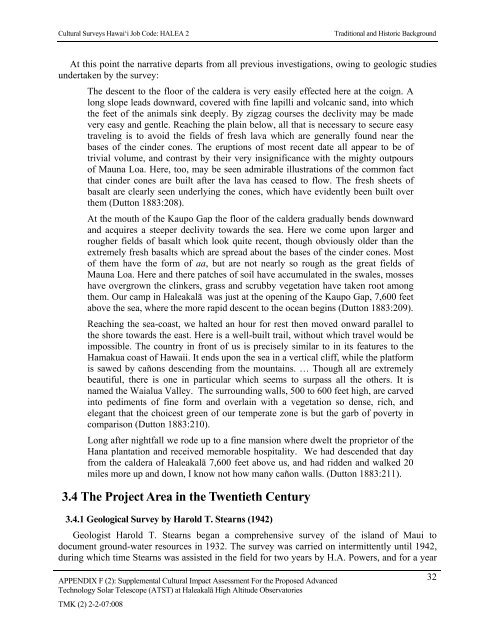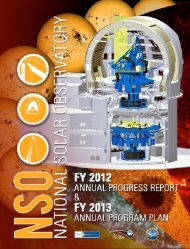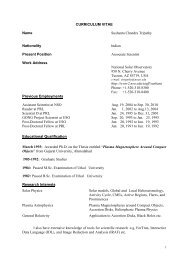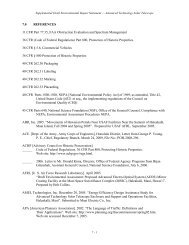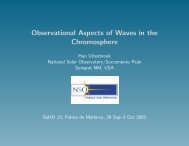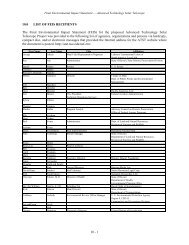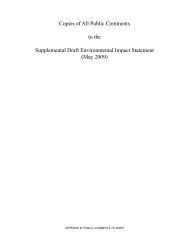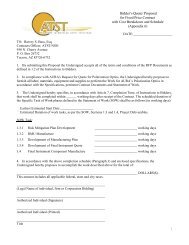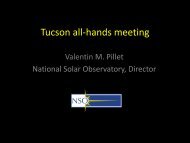F2 - ATST
F2 - ATST
F2 - ATST
Create successful ePaper yourself
Turn your PDF publications into a flip-book with our unique Google optimized e-Paper software.
Cultural Surveys Hawai‘i Job Code: HALEA 2Traditional and Historic BackgroundAt this point the narrative departs from all previous investigations, owing to geologic studiesundertaken by the survey:The descent to the floor of the caldera is very easily effected here at the coign. Along slope leads downward, covered with fine lapilli and volcanic sand, into whichthe feet of the animals sink deeply. By zigzag courses the declivity may be madevery easy and gentle. Reaching the plain below, all that is necessary to secure easytraveling is to avoid the fields of fresh lava which are generally found near thebases of the cinder cones. The eruptions of most recent date all appear to be oftrivial volume, and contrast by their very insignificance with the mighty outpoursof Mauna Loa. Here, too, may be seen admirable illustrations of the common factthat cinder cones are built after the lava has ceased to flow. The fresh sheets ofbasalt are clearly seen underlying the cones, which have evidently been built overthem (Dutton 1883:208).At the mouth of the Kaupo Gap the floor of the caldera gradually bends downwardand acquires a steeper declivity towards the sea. Here we come upon larger androugher fields of basalt which look quite recent, though obviously older than theextremely fresh basalts which are spread about the bases of the cinder cones. Mostof them have the form of aa, but are not nearly so rough as the great fields ofMauna Loa. Here and there patches of soil have accumulated in the swales, mosseshave overgrown the clinkers, grass and scrubby vegetation have taken root amongthem. Our camp in Haleakalā was just at the opening of the Kaupo Gap, 7,600 feetabove the sea, where the more rapid descent to the ocean begins (Dutton 1883:209).Reaching the sea-coast, we halted an hour for rest then moved onward parallel tothe shore towards the east. Here is a well-built trail, without which travel would beimpossible. The country in front of us is precisely similar to in its features to theHamakua coast of Hawaii. It ends upon the sea in a vertical cliff, while the platformis sawed by cañons descending from the mountains. … Though all are extremelybeautiful, there is one in particular which seems to surpass all the others. It isnamed the Waialua Valley. The surrounding walls, 500 to 600 feet high, are carvedinto pediments of fine form and overlain with a vegetation so dense, rich, andelegant that the choicest green of our temperate zone is but the garb of poverty incomparison (Dutton 1883:210).Long after nightfall we rode up to a fine mansion where dwelt the proprietor of theHana plantation and received memorable hospitality. We had descended that dayfrom the caldera of Haleakalā 7,600 feet above us, and had ridden and walked 20miles more up and down, I know not how many cañon walls. (Dutton 1883:211).3.4 The Project Area in the Twentieth Century3.4.1 Geological Survey by Harold T. Stearns (1942)Geologist Harold T. Stearns began a comprehensive survey of the island of Maui todocument ground-water resources in 1932. The survey was carried on intermittently until 1942,during which time Stearns was assisted in the field for two years by H.A. Powers, and for a yearAPPENDIX F (2): Supplemental Cultural Impact Assessment For the Proposed Advanced 32Technology Solar Telescope (<strong>ATST</strong>) at Haleakalā High Altitude ObservatoriesTMK (2) 2-2-07:008


